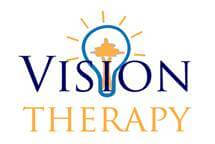What is Myopia?
Myopia is a condition in which light does not focus images correctly in the eye. This is usually due to the eyeball growing too long, resulting in light focusing in front of where it should. This causes what is commonly known as nearsightedness, in which objects further away are blurry.

Left: a relatively longer “myopic” eye Right: a normal eye
As the eyeball continues to grow, the structures inside may stretch and can be damaged. In advanced cases, myopia can put you at risk of sight-threatening conditions, such as:
- Retinal holes, tears, and detachments
- Myopic macular degeneration
- Glaucoma
This is why it is very important to prevent and slow the development of myopia in children to prevent them from developing blinding eye disease as an adult. Let’s look at the risk factors for developing myopia, which include:
- Age: between 5-9 years old
- Prescription: higher (more minus) than expected for age
- Family history: at least one parent with myopia
- Ethnicity: East Asian
- Time spent outdoors: less than 1.5 hours per day
- Time spent on near work: more than 2.5 hours per day

The more risk factors the child has, the higher the risk of level.
Can You Slow Down the Progression of Myopia?
Yes! Research is showing that there are methods to impede the progression of nearsightedness, but these actions are more effective when applied earlier in a child’s development. Myopic changes to the eye are generally permanent. However, therapy can be done to slow down the development and progression of myopia. Therefore, it is important that children have their eye health assessed at an early age, so that they can reap the full benefits of any potential treatment.
Individuals who are myopic tend to have more myopic children than non-myopic parents, but genetics alone do not determine whether or not an individual will become myopic.
Environmental Causes of Myopia
Environment plays a significant role in the development of nearsightedness. Environmental factors that promote nearsightedness include: consistently performing prolonged periods of near work (reading, computer, iPad, videogames), and not enough time spent outdoors.1 In addition, prolonged dark exposure appears to strongly influence myopia progression.2 Myopia occurs less frequently before children reach school age, but increases significantly during high school and college years. This pattern likely is explained by increased periods of continuous reading and studying in poor lighting conditions. For these individuals, environmental modification including ergonomic adjustments, improved lighting, additional rest breaks and increased periods of physical activity may decrease the rate of myopic progression.3,4
Treatment Options for Myopia Control
Atropine
Atropine is an eye drop that is sometimes used to dilate the pupils. Its usage has been well-documented since the 1960s. Research has shown that a low concentration of atropine can reduce the rate of myopia progression. However, the low concentration is not available commercially, and must be prescribed by optometrists and compounded by specialized pharmacists. Due to the low concentration and preservative-free nature, its risk profile is very low, with minimal side effects.
MiSight soft contact lenses
MiSight (Coopervision) is a daily disposable contact lens that gives clear vision while slowing down myopia progression. They are worn like any regular daily disposable contact lens, and are disposed of at the end of the day. As with regular soft contact lenses, there is a very low chance of bacterial infection, which is mitigated with proper hygiene and lens wear schedule.
Orthokeratology
Also known as Ortho-K, these are hard lenses that are worn overnight to reshape the surface of your eye. Depending on your prescription, it can provide clear vision without glasses or prescription the following day, and the effect usually lasts around a day. With overnight wear, there is a higher risk of infection, but this risk remains very low with proper lens care and hygiene.
Spectacle lenses
MyoVision (ZEISS) is a specialized type of lenses that is designed to slow down myopia progression. They work similar in concept to MiSight and Ortho-K contact lense
Note that once a person develops myopia, you cannot reverse it unless the underlying cause is due to a binocular vision or eye-focusing (accommodative) dysfunction. In such instance, then vision therapy can be beneficial.
References
- Efficacy comparison of 16 interventions for myopia control in children: a network meta-analysis (Huang et al., 2016)
- The safety of soft contact lenses in children (Bullimore, 2017)
- The safety of OK: a systematic review (Liu and Xie, 2016)
- Time spent in outdoor activities in relation to myopia prevention and control: a meta-analysis and systematic review (Xiong et al., 2017)
Updated by Drs. Debbie Luk and Fred Cen, Jan 2020
Originally created by Drs. Debbie Luk and Jessica Yang, June 2013


